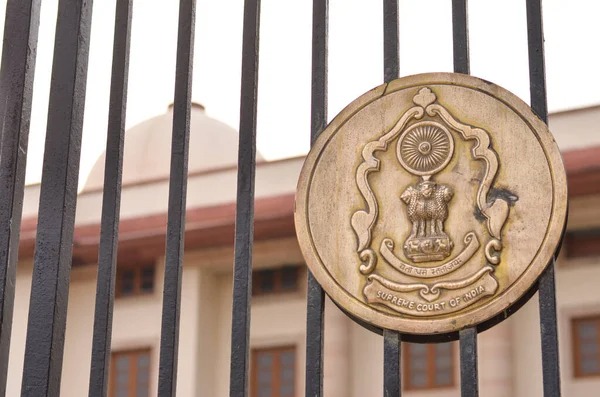Dalal, J.@mdashThis is a second appeal by defendant zamindars. The plaintiff Nand Kishore had been drawing water for irrigation from a kachcha well in plot 476. He is a tenant. There was a partition between the zamindars, that is between the defendants and the immediate zamindar from whom Nand Kishore held the land cultivated by him. Plot 476/2, in which the kachcha well existed, fell to the share of the defendants and not to the share of the plaintiff''s zamindar. Thereupon the defendants prevented the plaintiff from watering his field from the well, whereupon the plaintiff sued for an injunction and damages. The suit was decreed by both the subordinate Courts, and hence the defendants have appealed. The plaint is a document of merit and very carefully details the reasons for the claim. In para. 1 it is stated that the plaintiff is an occupancy tenant of certain plots of land in the village. Formerly the land was situated in mahal Khushal Singh and the plaintiff had irrigated his cultivated land from kachcha well situated in plot 476/5 according to the former nomenclature. Subsequently as stated in para. 3 this plot was divided into two portions, the portion containing all the kachcha wells was allotted to mahal Partap Singh belonging to the defendants while the other portion having no wells was allotted to the plaintiff''s zamindar. It is specifically stated in para. 3 that no wells could be sunk in the portion of the land allotted to the plaintiff''s zamindar. In para. 5 the allegation made is that the plaintiff''s cultivated land has been irrigated as a matter of custom for more than 50 years from the well situated in present plot 476/2 and, therefore, the plaintiff had acquired at the/partition of the zamindari property a customary right of easement to irrigate his plots from water in that well. It is also explained in para. 5 that this particular plot is known as "kohana'''' (koh) meaning a layer of sand designating a place where water would be found. This particular area is known as "kohana" to distinguish it from the other area where water would not be discovered. In para. 8 again it is repeated that the claim is based on a customary right of easement.
2. It was argued here that a tenant cannot enforce any right of easement against his landlord. This is a proposition distinctly in teeth of the provisions of Section 18, Easements Act (No. 5 of 1882). According to that provision of law, an easement may be acquired in virtue of a local custom and such easements are called customary easements. The illustration narrates how a cultivator or a tenant may claim a customary right against his own zamindar. By the custom of a certain village every cultivator of village land is entitled as such to graze his cattle on the common pasture. A having become the tenant of a plot of uncultivated land in the village breaks up and cultivates that plot. He thereby acquires an easement to graze his cattle in accordance with custom. Obviously this easement is acquired as against the zamindar owner of the common pasture. Ground 2 of appeal is that the customary right claimed was unjust, unreasonable and improper. In my opinion, the denial of such a right is unjust, unreasonable and improper as it would lead to drying up of a cultivator''s crops. Ground 3 deals with partition, and it was argued that at the time of partition no right was reserved to the plaintiff to take water from a well situated in land allotted to a zamindar other than the plaintiff''s own zamindar. This argument overlooks the patent fact that the plaintiff was no party to the partition and cannot be punished for the neglect of his zamindar. The other two grounds of appeal are merely argumentative.
3. In the case of Rajab Ali v. Rajjoo Khan [1914] 12 A.L.J. 963, Sundar Lal, J., considered the law on the subject and has explained it with great lucidity. A zamindar came to Court alleging that certain occupancy tenants of the village had trespassed on waste land and desired their ejectment. The learned Judge held that the tenants had a customary right of easement as against the zamindar because by a village custom they were entitled to use the plot of land for the purpose of pressing and boiling the sugarcane juice and for cognate purposes. Just as the crushing of the sugarcane and the pressing and boiling of the juice in that case were considered incidental to agricultural operations similarly the irrigation of a field is incidental and even more so, to the raising of crops for the purpose of agriculture. The rulings referred to by the learned Counsel for the appellants have no bearing on the present case. In Gaddar v. Kalta [1919] 17 A.L.J. 672 both parties were zamindars who were parties to the partition, and the point for consideration was an easement of necessity and not one based on custom. In Bahadur v. Khushi Ram [1914] 11 A.L.J. 990 the claim was not based on custom. In Karan Singh v. Dal Chand AIR 1924 All. 159, a learned Judge of this Court pointed out, as I have done above, that Section 18, Easements Act, expressly recognized that a tenant may have a customary right of easement against his landlord. He further laid down that any kind of easement recognized by the custom of the provinces would fall within the meaning of the term "customary right of easement." He further explained that the Full Bench ruling of Udit Singh v. Kashi Ram [1892] 14 All. 185, on which is based the ruling in the case of Bahadur [1914] 11 A.L.J. 990, quoted above referred to an easement by prescription and not to a customary right of easement. Both the Subordinate Courts have held that the custom was fully established and I agree.
4. I dismiss the appeal with costs.

